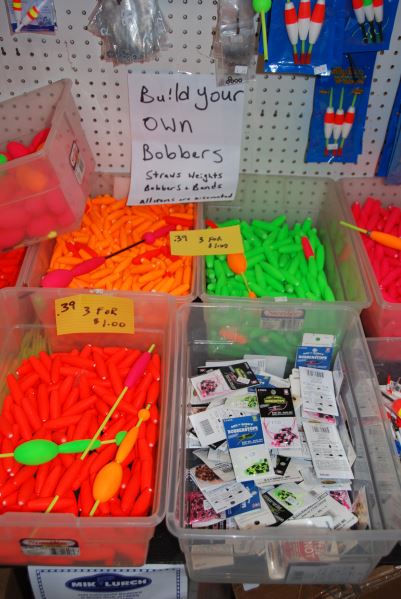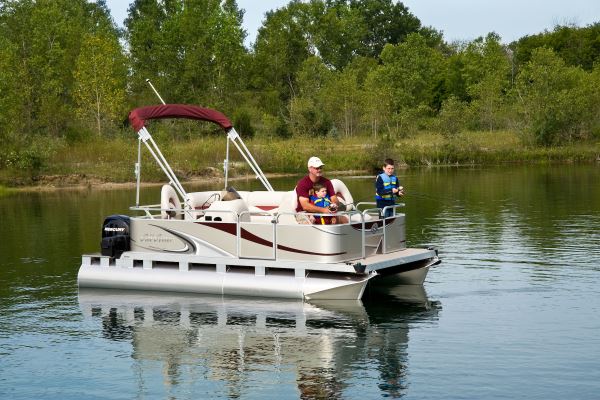 I just survived another winter season of sport show appearances, where I spend waaaay too much time hanging around the exhibit booths and seminar stages between my own presentations at a dozen fishing expos annually. Doing so helps me keep my finger on the pulse of all things fishing and boating and provides fertile waters for article ideas I can use all season long. I listen-in as sales folks discuss their latest innovations in boats, motors, accessories and angling options, and actually record some fishing talks by the pros, which I listen to later to develop story subjects.
I just survived another winter season of sport show appearances, where I spend waaaay too much time hanging around the exhibit booths and seminar stages between my own presentations at a dozen fishing expos annually. Doing so helps me keep my finger on the pulse of all things fishing and boating and provides fertile waters for article ideas I can use all season long. I listen-in as sales folks discuss their latest innovations in boats, motors, accessories and angling options, and actually record some fishing talks by the pros, which I listen to later to develop story subjects.
This past show season, the “it” phrase among avid anglers, at least those who fish from boats, was forward-facing sonar, or “FFS.” Since the technology was introduced in 2018, its use has become as widespread as the controversy surrounding the live-time, fish-watching capabilities that some say give anglers’ using the same an unfair advantage. That’s a discussion for another day.
At the other end of the angling innovation spectrum, I was pleased to see how many featured fishermen at the seminar stages I found on the show circuit who were offering advice on the use of bobbers as part of the fishing skill set they recommended. From advice for steelhead anglers about how to precisely weigh their delicate floats to crappie pros stressing the importance of bobber placement and walleye guides teaching how to use slip bobbers to place baits in the face of deep-holding fish, bobbers were getting the respect the floats deserve.
 By design, the colorful pieces of plastic, foam, cork or even porcupine quills known as “floats” or “bobbers” are among angling’s most visible accessories: bobbers are all about being seen, at least by the angler. At their most basic, the floats suspend the fishing bait at a predetermined depth, hopefully where the fish will better be able to see the offering below the water while providing an easy-to-see visual alert on the surface for the angler to tell when a fish is mouthing–or has eaten–the bait.
By design, the colorful pieces of plastic, foam, cork or even porcupine quills known as “floats” or “bobbers” are among angling’s most visible accessories: bobbers are all about being seen, at least by the angler. At their most basic, the floats suspend the fishing bait at a predetermined depth, hopefully where the fish will better be able to see the offering below the water while providing an easy-to-see visual alert on the surface for the angler to tell when a fish is mouthing–or has eaten–the bait.
But there is nothing simple about how fishermen have learned to use floats to increase their catch. Bobbers come in a bewildering variety of shapes and sizes, from floating putty that fly anglers dab onto their leaders to buoy tiny nymphs, to beach-ball sized inflatable floats that shore-bound fishermen use to harness the breeze to blow their baits beyond casting distance, far out across the water. Catfish and turtle anglers use pool noodles or empty gallon jugs as floats for night fishing, often putting a chemical light-stick inside each flotation device to keep track of the free-drifting floats and the baited hooks they suspend below.
The most popular freshwater fishing bobbers among recreational anglers are round, about an inch in diameter, or stick-shaped, about the size of a pencil. Most are made of foam, wood or plastic, and are fitted with a spring clip to attach and hold onto the fishing line. The depth at which the bait is suspended below the bobber can be easily adjusted by simply sliding the bobber up or down the line.
 The long “stick” style bobbers are often used for fooling finicky fish, species that will spit out the bait if they feel any resistance. Carp and crappie anglers often use these low resistance “pencil” bobber styles when targeting those species. Bass, catfish and sunfish anglers, on the other hand, find that their quarry often aren’t bothered by the resistance put up by a more bulbous bobber when they swim off with a bait, and use the easy-to-cast-and-see spherical floats.
The long “stick” style bobbers are often used for fooling finicky fish, species that will spit out the bait if they feel any resistance. Carp and crappie anglers often use these low resistance “pencil” bobber styles when targeting those species. Bass, catfish and sunfish anglers, on the other hand, find that their quarry often aren’t bothered by the resistance put up by a more bulbous bobber when they swim off with a bait, and use the easy-to-cast-and-see spherical floats.
Regardless of shape, conventional, spring-loaded bobbers work well for most fishing conditions when the fish are found in six feet or water or less. Using a traditional bobber gets tougher when you try to use the clip-on models to hold your bait at depths much more than that, and that’s when slip bobbers come into play.
 Even from the elevated deck of a pontoon or deck boat, if you’ve ever attempted to cast a line to which a traditional bobber has been attached more than about 6 feet up the line from the hook, you know how hard it is to swing the offering pendulum-style into anything resembling a cast. The working end of the rig hanging down below the bobber usually catches on the deck, the ground or the water’s surface somewhere during the back cast and snubs the entire cast.
Even from the elevated deck of a pontoon or deck boat, if you’ve ever attempted to cast a line to which a traditional bobber has been attached more than about 6 feet up the line from the hook, you know how hard it is to swing the offering pendulum-style into anything resembling a cast. The working end of the rig hanging down below the bobber usually catches on the deck, the ground or the water’s surface somewhere during the back cast and snubs the entire cast.
Designed for fishing baits deep under bobbers, the floats allow the line to slide freely through or along the body of the bobber. Using a bobber “stop” placed up the line at a point where you want it to catch and hold against the float, you can fish as deep as you need without having to worry about whipping your terminal tackle around the deck while attempting to cast the entire length of line below the bobber. For which your fellow boatmates should be grateful.

